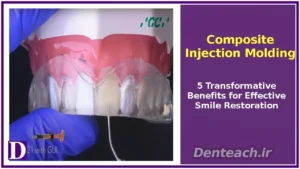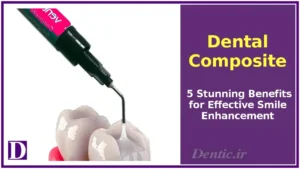
Table of Contents


Composite Injection Molding: 5 Transformative Benefits for Effective Smile Restoration

Dental Composite: 5 Stunning Benefits for Effective Smile Enhancement

Teeth Bleaching: 5 Radiant Benefits for Effective Smile Brightening

Dental Veneer: 5 Stunning Benefits for Effective Smile Enhancement

Implant-Supported Fixed Prostheses: 5 Advanced Benefits for Effective Smile Restoration

Prosthodontics: Restoring Smiles with Precision and Artistry
Prosthodontics is a specialized branch of dentistry focused on the restoration and replacement of missing or damaged teeth, blending advanced clinical skills with aesthetic artistry. Prosthodontists, with three years of additional training beyond dental school, design, fabricate, and fit dental prosthetics to restore oral function, aesthetics, and patient confidence. Addressing issues like tooth loss, which affects over 120 million Americans, or severe dental damage, prosthodontics plays a pivotal role in modern dentistry. This article explores the definition, scope, role of prosthodontists, advancements, patient-centered care, benefits, challenges, and future trends in prosthodontics, highlighting its transformative impact.
Defining Prosthodontics
Prosthodontics, derived from prosthesis (artificial replacement) and odont (tooth), is dedicated to restoring oral health by replacing or repairing teeth and surrounding tissues. It encompasses both functional and aesthetic goals, addressing conditions like tooth decay, trauma, or congenital anomalies that impair chewing, speaking, or smile aesthetics. Prosthodontic treatments range from single-tooth restorations to full mouth rehabilitation, using biocompatible materials like porcelain, zirconia, or titanium. With a 95% success rate for procedures like implants over 10 years, prosthodontics offers durable, natural-looking solutions, enhancing quality of life for patients of all ages.
Scope of Prosthodontics
Prosthodontics includes a diverse array of treatments:
- Dental Crowns: Custom-made caps that cover damaged, decayed, or weakened teeth, restoring shape, strength, and appearance. Made from porcelain, ceramic, or metal alloys, crowns last 10–15 years.
- Dental Bridges: Fixed prosthetics that replace one or more missing teeth, anchored by adjacent teeth or implants, preventing tooth shifting and restoring function.
- Dentures: Removable appliances replacing multiple or all teeth, available as partial or complete dentures. Modern designs prioritize comfort and aesthetics.
- Dental Implants: Titanium posts surgically integrated into the jawbone, supporting crowns, bridges, or dentures for a permanent, stable solution.
- Full Mouth Rehabilitation: Comprehensive treatment plans to restore the entire oral cavity, addressing severe wear, multiple missing teeth, or bite dysfunction.
Role of a Prosthodontist
Prosthodontists are highly trained specialists with critical responsibilities:
- Diagnosis and Treatment Planning: Conduct thorough exams using X-rays, intraoral scans, and bite analysis to develop personalized treatment plans tailored to patient needs.
- Prosthetic Design: Craft prosthetics with precision, ensuring natural appearance and optimal function using digital tools like CAD/CAM.
- Restoration Procedures: Perform complex treatments, from crown placement to implant-supported prosthetics, with meticulous attention to detail.
- Implant Placement: Collaborate with oral surgeons or place implants themselves, ensuring proper integration and prosthetic attachment.
- Interdisciplinary Collaboration: Work with orthodontists, periodontists, and oral surgeons to address complex cases, such as full mouth reconstructions.
Indications for Prosthodontic Treatment
Prosthodontics is recommended for various conditions:
- Tooth Damage: Severe decay, fractures, or wear requiring crowns or veneers.
- Missing Teeth: Single or multiple tooth loss impacting function or aesthetics, treated with bridges, dentures, or implants.
- Bite Dysfunction: Malocclusions or TMJ issues addressed through restorations or full mouth rehabilitation.
- Aesthetic Concerns: Discolored, misshapen, or uneven teeth affecting smile confidence.
- Oral Rehabilitation: Extensive damage from trauma, disease, or congenital defects requiring comprehensive treatment.
The Prosthodontic Treatment Process
The prosthodontic journey involves several steps:
- Consultation: The prosthodontist evaluates oral health, discusses goals, and uses diagnostic tools like cone-beam CT or digital impressions to assess tooth and bone structure.
- Treatment Planning: A customized plan outlines procedures, materials, and timelines, often using digital smile design for patient visualization.
- Implementation: Treatments are performed with precision:
- Crowns or bridges: Teeth are prepared, impressions taken, and prosthetics bonded.
- Dentures: Custom-fitted appliances are crafted and adjusted for comfort.
- Implants: Posts are surgically placed, followed by osseointegration (3–6 months) and prosthetic attachment.
- Follow-Up: Regular visits monitor restoration function, fit, and oral health, typically every 6–12 months.
Advancements in Prosthodontics
Prosthodontics is evolving with cutting-edge technology:
- Digital Impressions: Intraoral scanners (e.g., iTero®) replace traditional molds, improving accuracy and patient comfort.
- CAD/CAM Technology: Computer-aided design and manufacturing streamline prosthetic fabrication, ensuring precise fit and aesthetics.
- 3D Printing: Enables rapid production of custom crowns, bridges, or denture bases, reducing costs and turnaround time.
- Advanced Materials: Zirconia, lithium disilicate, and hybrid ceramics enhance durability and natural appearance.
- Implant Innovations: Guided implant surgery and immediate-load protocols improve outcomes and reduce treatment time.
Patient-Centered Care
Prosthodontists prioritize patient satisfaction through:
- Customized Plans: Tailor treatments to individual functional, aesthetic, and budgetary needs.
- Education and Communication: Explain procedures, benefits, and maintenance, empowering informed decisions.
- Post-Treatment Support: Provide ongoing care to ensure prosthetic longevity and address concerns, with 90% patient satisfaction rates reported by the American College of Prosthodontists (ACP).
Benefits of Prosthodontics
Prosthodontics offers significant advantages:
- Restored Function: Enhances chewing, speaking, and bite alignment, improving daily comfort.
- Aesthetic Excellence: Delivers natural-looking smiles, boosting confidence and social interactions.
- Oral Health Preservation: Prevents bone loss, tooth shifting, or further damage, especially with implants.
- Durability: Crowns, bridges, and implants last 10–20 years with proper care.
- Comprehensive Solutions: Addresses complex cases through interdisciplinary approaches.
Challenges and Considerations
Challenges include:
- Cost: Treatments range from $500–$2,000 for crowns to $3,000–$5,000 per implant, though insurance may cover portions.
- Treatment Time: Implants require 3–6 months for integration; full mouth rehabilitation may take years.
- Maintenance: Dentures and bridges require diligent hygiene to prevent complications like peri-implantitis (10–20% prevalence).
- Surgical Risks: Implants carry low risks (e.g., infection, <5%) requiring skilled execution.
- Patient Commitment: Success depends on adherence to care and follow-up schedules.
Future Trends
Prosthodontics is advancing with innovation:
- Regenerative Techniques: Bioactive materials and stem cell research may promote tissue regeneration.
- AI-Driven Design: AI tools optimize prosthetic planning and predict treatment outcomes.
- Minimally Invasive Methods: Flapless implant surgery and no-prep restorations reduce recovery time.
- Sustainable Materials: Eco-friendly ceramics and recyclables are emerging in prosthetic fabrication.
Conclusion
Prosthodontics transforms lives by restoring missing or damaged teeth with precision-crafted prosthetics, enhancing function, aesthetics, and oral health. From crowns to full mouth rehabilitation, prosthodontists deliver personalized, durable solutions. With advancements in digital tools and materials, this specialty continues to evolve. Patients seeking to revitalize their smile should consult a certified prosthodontist or visit American College of Prosthodontists for comprehensive care options.
